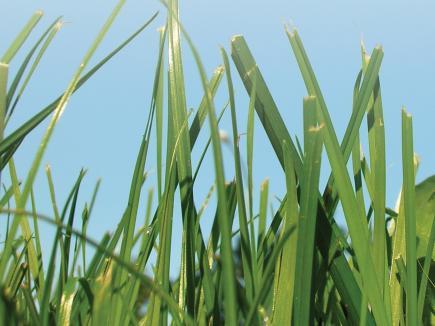 Your lawn is a living, breathing organism. It is a photosynthesizing, oxygen-producing, carbon-sequestering miracle, teeming with beneficial microbes and insects. Promoting its health is easier than you think!
Your lawn is a living, breathing organism. It is a photosynthesizing, oxygen-producing, carbon-sequestering miracle, teeming with beneficial microbes and insects. Promoting its health is easier than you think!
The benefits of grasses are immeasurable. Lawns give off precious oxygen and trap and hold climate-warming carbon. The dense, fibrous root system helps filter and clean runoff water before it goes into our storm sewers. Your lawn also helps cool the atmosphere when it gives off water vapour through photosynthesis. Lawns prevent wind and water erosion.
Grass can be a valuable and worthy, yet low maintenance, groundcover — soft enough for babies to crawl on, yet tough enough to bounce back after a soccer game.
With just a little bit of care, your family and environment can benefit from a healthy lawn.
Feeding
Most lawns need regular fertilizing to stay thick and healthy. The professional lawn care members of Landscape Ontario will know the best type of fertilizer and application frequency for your specific lawn. The Lawn Care Sector Group of Landscape Ontario recommends its members use a phosphorus-free fertilizer on established turf. If you are a do-it-yourselfer, your local independent garden centre will have a number of high quality options for slow release fertilizer. Do yourself a favour and measure the square footage of your lawn before shopping, so you know how much to buy.
Seeding
The most effective way to combat weeds is to have a thick lawn. Applying quality seed, once in spring and again in early fall, will pay big dividends. Over the course of a season or two, you will see a marked difference in your lawn. Be sure to keep the seed out of your flower and shrub beds, and off patios or walkways. You can put the seed on with a spreader, or even by hand if you wish. Apply a light topdressing of good quality compost with the grass seed.
Mowing
An essential part of keeping a lawn healthy is regular mowing. Generally speaking, mow your lawn every five to seven days, more frequently in spring and fall when grass is growing vigourously. Keep the mower blades sharp, and set your mower to cut at eight cm (three inches) high. Keep regular; infrequent mowing will cause your lawn to thin out — a lot! When it is extremely hot, do not mow during mid-day.
Watering
Lawns need an inch of water per week. Rainfall is always better than the tap, so if your lawn is hanging in there with Mother Nature’s elixir, there is no need to pull out the sprinkler. It is ok to let your lawn go dormant in the summer — to a point! If your grass has gone three weeks or more without any appreciable moisture, it’s time to give it a drink. You don’t need to soak it, but leaving the sprinkler on for 15-20 minutes per spot will help it stay alive, and once cooler temperatures and fall rains return, it will bounce back.
Protecting
If animals are digging up areas of your lawn this spring, chances are you have a grub problem. Nematodes are microscopic worm-like creatures, that will kill grubs when correctly applied. Research has shown us that the only time to apply nematodes to successfully control grubs is in the fall. A professional lawn care member of Landscape Ontario can apply these beneficial organisms to your lawn, or you can purchase them to do it yourself. If you buy from a garden centre, make sure the nematodes have been kept refrigerated.
Bookmark www.landscapeontario.com to stay current on the best strategies for your lawn. Your family will thank you!